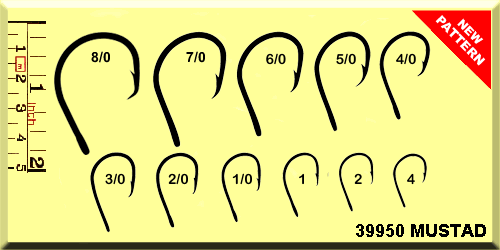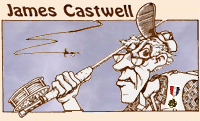|
"We believe that enough study of this issue has been done that we can
now begin to take the next step to implementation," so says Jim Donofrio,
executive director of the RFA. (Recreational Fishing Alliance). He is
referring to Circle Hooks.
Well, there you have it, they are here and more are on the way. Does the
advent of Circle Hooks in any way impact us fly fishers? You bet it does.
The above statement was made in reference to a situation on the east coast,
involving their use and striped bass fishing. Because of the savage way stripers
take food it goes all the way down fast. Circle hooks are proving a great tool
for releasing stripers without injury. Most fish take your offering in their mouth,
then attempt to do something with it. Not so with stripers. As the Circle hooks
can actually be pulled up from the inside of the fish without catching on anything
they are finding much favor with those who fish with an eye toward conservation.
The hook does not engage until it is about to leave the fishes jaw, at which time,
because of the unique form, it grabs solidly in the corner of a fish's mouth.
California already has some laws about where and when they must be used.
They will soon be required by law in more of the states, on all coasts. Why?
Because they work. The biggest problem is there are no set standards yet as to
exactly what is a 'Circle Hook.'

They're ugly things in my opinion and don't look like they would hook anything.
This seems to be an opinion shared with many fishermen. Although Jeff Pierce
of Mustad has made almost a career of catching as many types of fish
(approximately 60 to date) on the things as the company will allow him to
pursue, many fishers still resist such a radical departure from the norm. At
this time they are used mostly for bait fishing, the trick is to not set the hook
when a fish is felt but to let it take it, run off and swallow. Then simply lift the
rod and start reeling. The hook will pull out of the fishes gullett and catch on the corner
of it's jaw. The facts seem to support this idea.
Will you soon be using them on your flies? Perhaps. Once most fish grab a
fly they seem to be able to detect it as a phoney and expel it rather quickly.
That is under the right conditions. According to Pierce though, in practice
that is not always the case. Even though they take a fly differently than bait,
the 'turn on the strike' is enough to get the job done. Today you can get a
Circle Hook in nearly size you might like clear down to size 18 for nymphs.
Most companies have something to offer and will most likely continue to fill
out the lines. How about a Deceiver or Clouser tied on a circle Hook? For
one thing, with the point turned in as it is the hook may not get hung up on
things as often. The truth is, they are about as snaggless as a fly can get.
What I see as the fly-fishers interest here is the great number of fish returned
to fight another day. Many times the fish we catch is not the one we had targeted.
As an example here in Washington, often one specie of Salmon will be open,
but one or two others will not be. When they are 'accidently' caught they must
be released unharmed. Mostly they do get put back, not always unharmed though.
Especially when the guys are using herring as bait. If Circle Hooks are mandated,
the result would be we will have more unharmed fish to fish for with our flies and
that is a good point. Anything that helps release fish without doing them any
damage is high on my list. Some places already have 'catch and release' only
seasons now.
Be willing to do some study and investigation on the various forms and shapes
available. There are wide differences. Some are simple adaptations of other
hooks, others are a compromise somewhere between a "J" hook and a circle.
Not all have the point directly in line with the shank but have it a bit offset.
This can render them a bit nasty. The more the offset, the nastier - they kill.
A final note for us fly fishers. If you ever have hit any rocks or such on your
back-cast and found you had blunted the point of your hook, rejoice! If you
do that with a Circle Hook it won't happen. The point is turned in and
protected.
One note of interest from a top fly-fishing guide out of Palm Beach,
Florida. "I've spent years teaching my clients how to set the hook,
be darned if I am going to try to change that now." One thing we
may be giving up is the thrill of setting the hook. Time will
tell if we are willing to.
There are some with strong feelings about this subject and a few noses may
get bloodied before it's all decided. But one thing you can bet on for sure.
They are here to stay and more are on the way. Get used to them.
~ James Castwell
|





